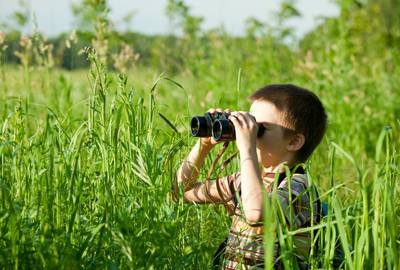
We have gotten so used to learning about things through pictures and videos that we have forgotten about the classroom outside. There is so much to learn just by exploring the great outdoors, and exploring nature is healthy psychologically and physically. Here are some ideas on using the great outdoors as a classroom.
1. Teach your children. Yes, they are being taught in sch ool, but taking them outside on an individual basis is an experience that can't be matched in the classroom. Explore the plants, animals, and geology of your area using field guides and other books.
2. Do a "unit study." Again, whether your kids are schooled at home or in public schools, doing a study on a particular aspect of your local flora and fauna is a wonderful way to teach your kids while they have fun.
Study up on the wildlife and plants, caves and rocks, creeks and streams, and so forth. Then observe what your kids seem to like learning about the most – trees? birds of prey? edible plants? – and go with that subject. Take out books and go on a field trip with binoculars, a leaf press, or whatever accoutrements you need for your kids' interests.
3. Bring nature in when it's appropriate. In the spring, look for caterpillars. Capture one and put it in a large jar along with more of the plant it was eating when you found it. Put a stick in the jar, too. The caterpillar will build a chrysalis or cocoon on the stick.
While you are waiting, identify the caterpillar and read up on the habitat of the butterfly or moth that you will soon have. Watch for the butterfly or moth to fly out. Then let it go in a place that fits the habitat you've studied.
In the fall, gathering, identifying, and preserving leaves is an educational and colorful project.
Point out stars, planets, and constellations in the night sky. Find out when there is going to be a meteor shower in your area, and take your kids out to see it. Learn about upcoming celestial events and take your kids to observe the wonders in the sky.
4. Take sketchbooks into the outdoors and draw, sketch, or paint what you see. Portable media that would work for this project include watercolors, oil and chalk pastels, charcoal, and pencil.
5. Do nothing at all. Take a hike out into the woods or whatever your local wilderness is, and just let your kids go (safely, of course). Don't have anything planned. Just enjoy the scenery, turn over rocks, play in the streams, and enjoy the natural world.
6. Talk to your kids about the importance of nature preservation. As they begin to enjoy the great outdoors, they need to know they are responsible for preserving it for other children and adults.

